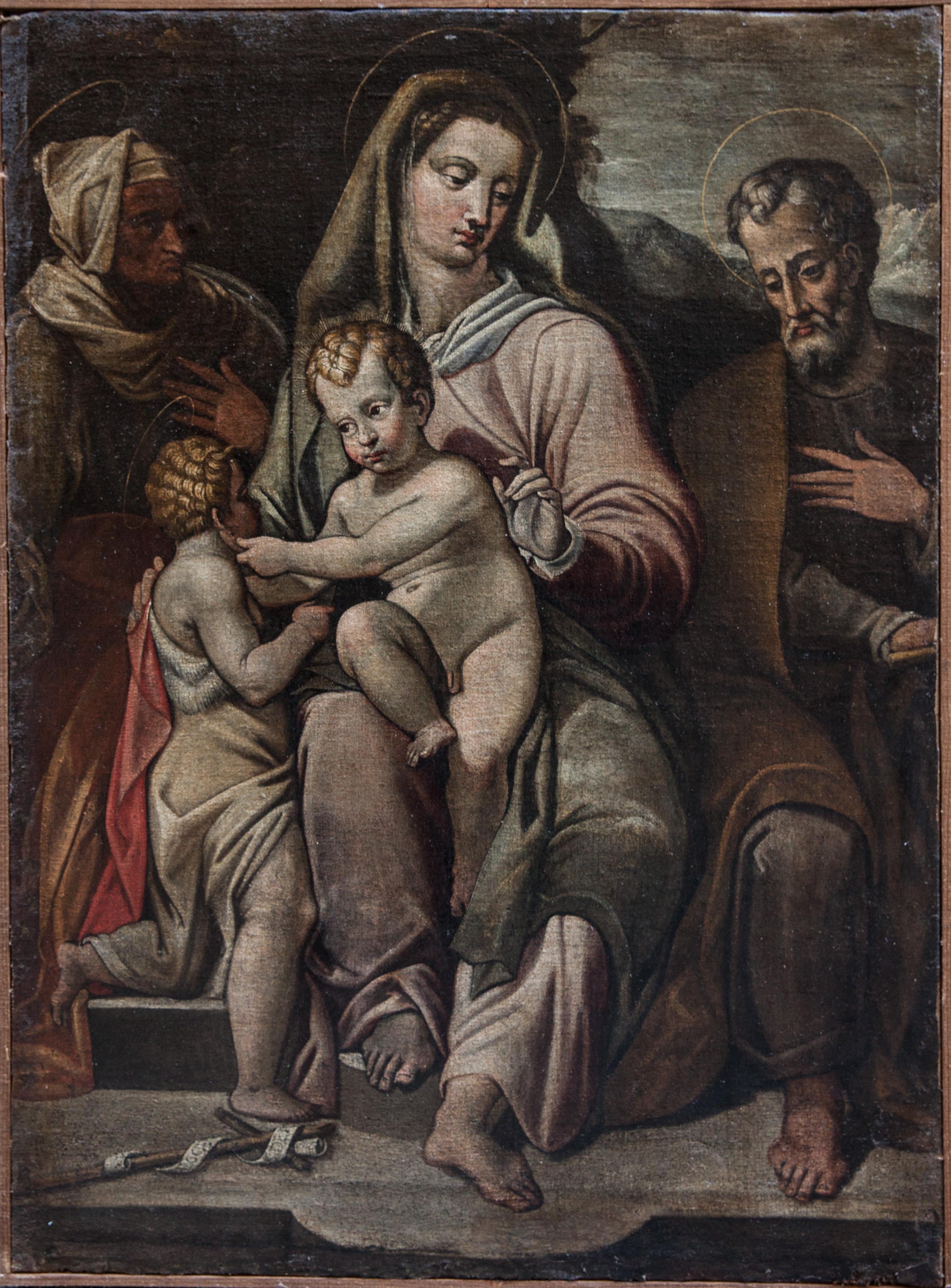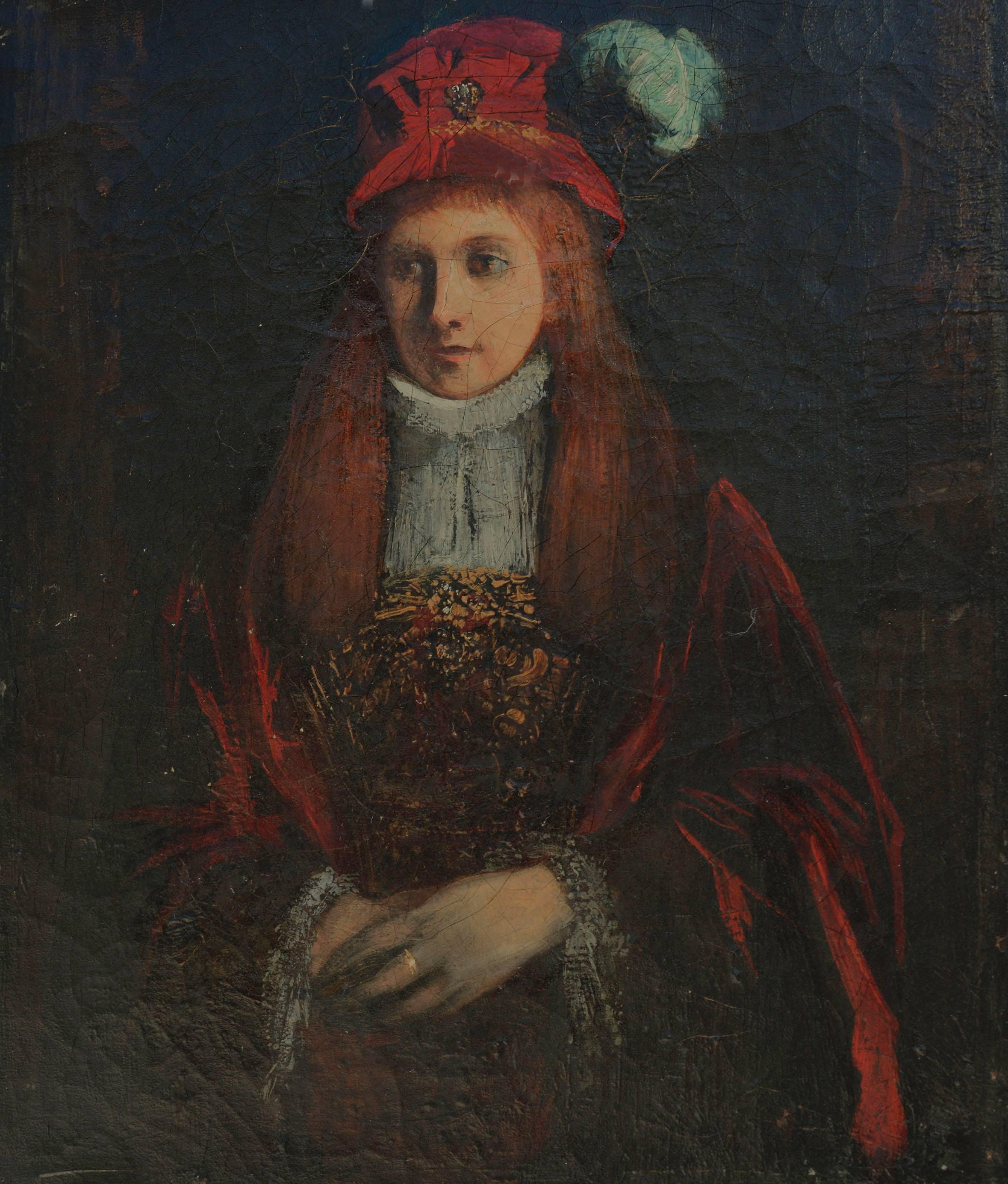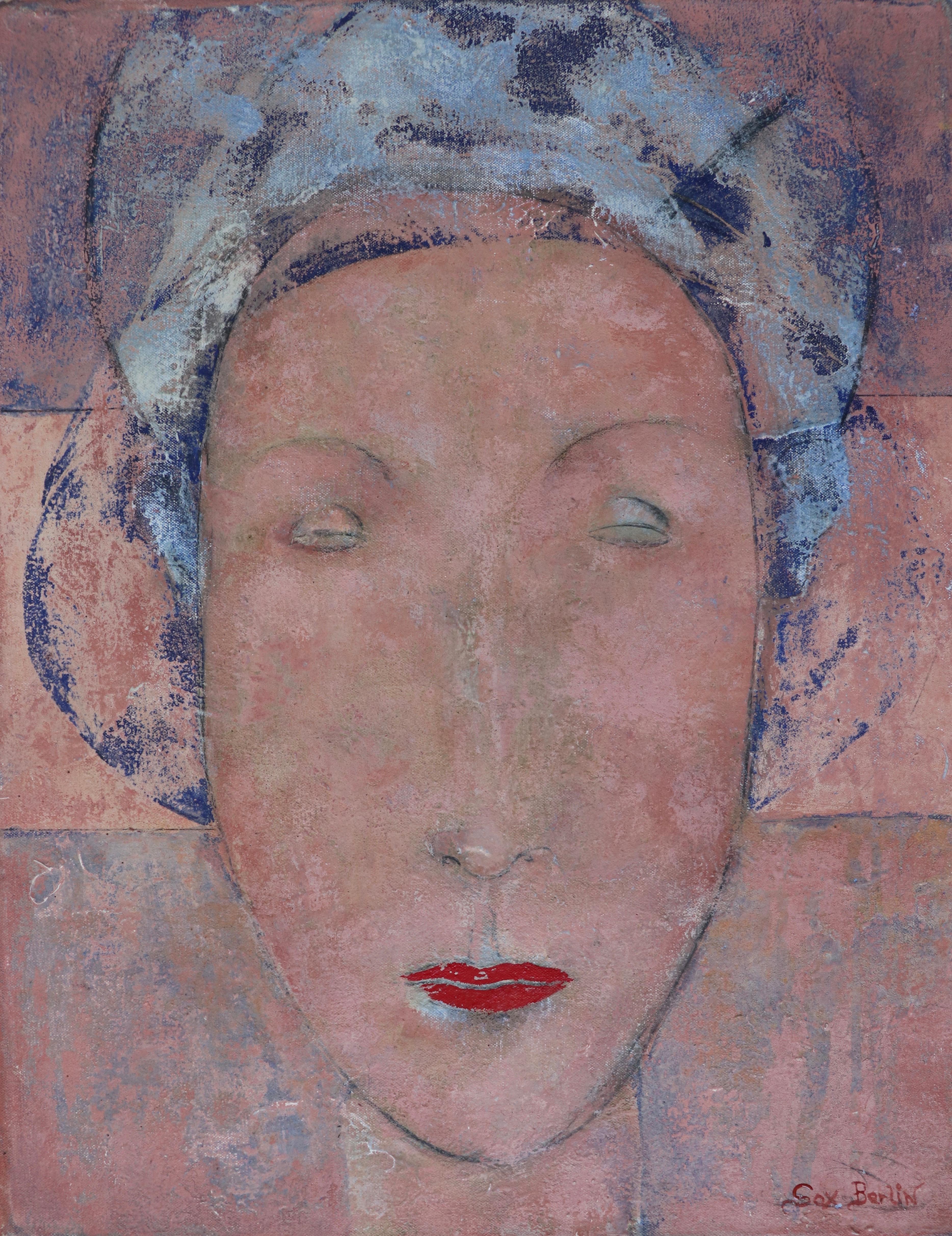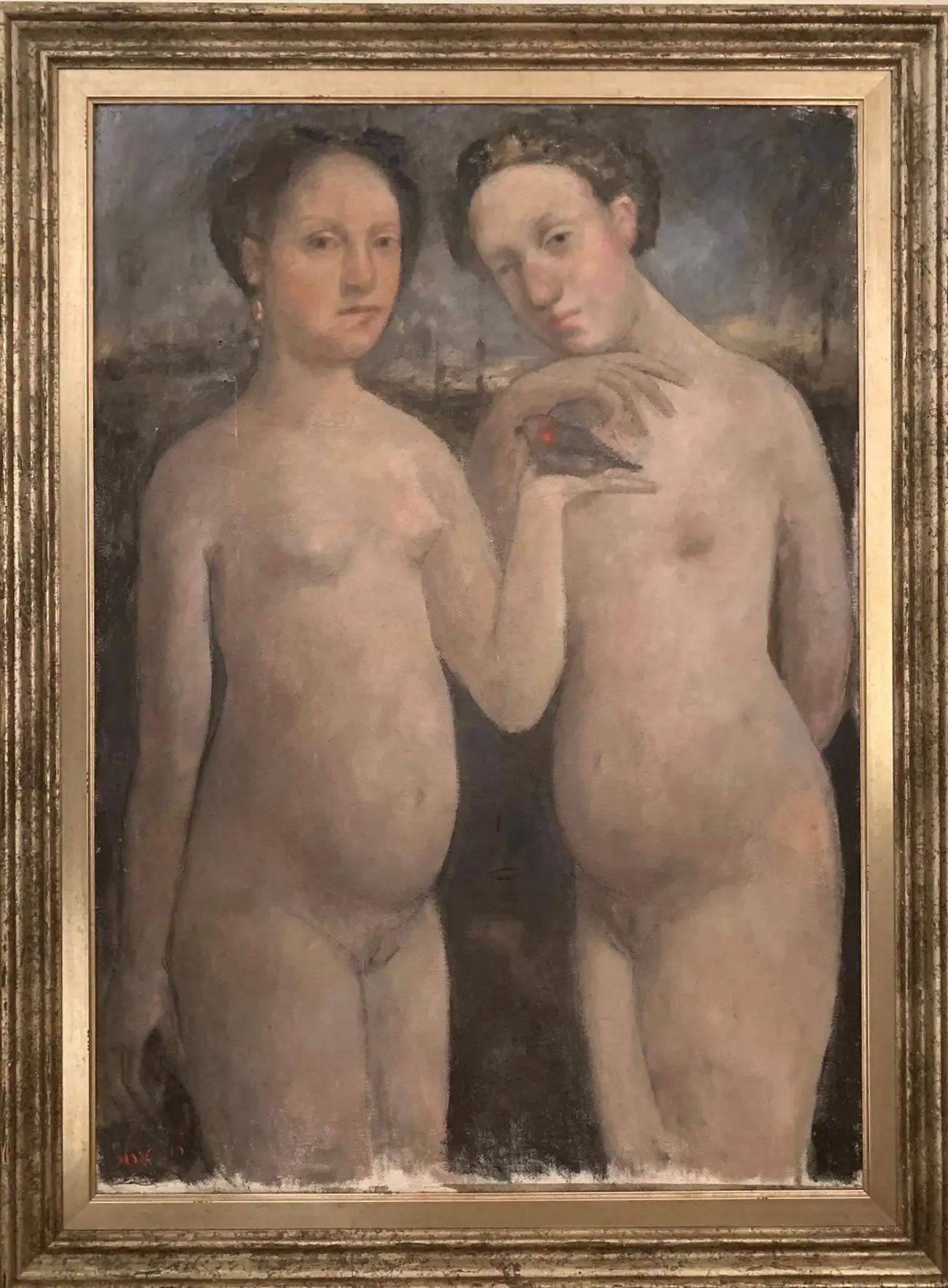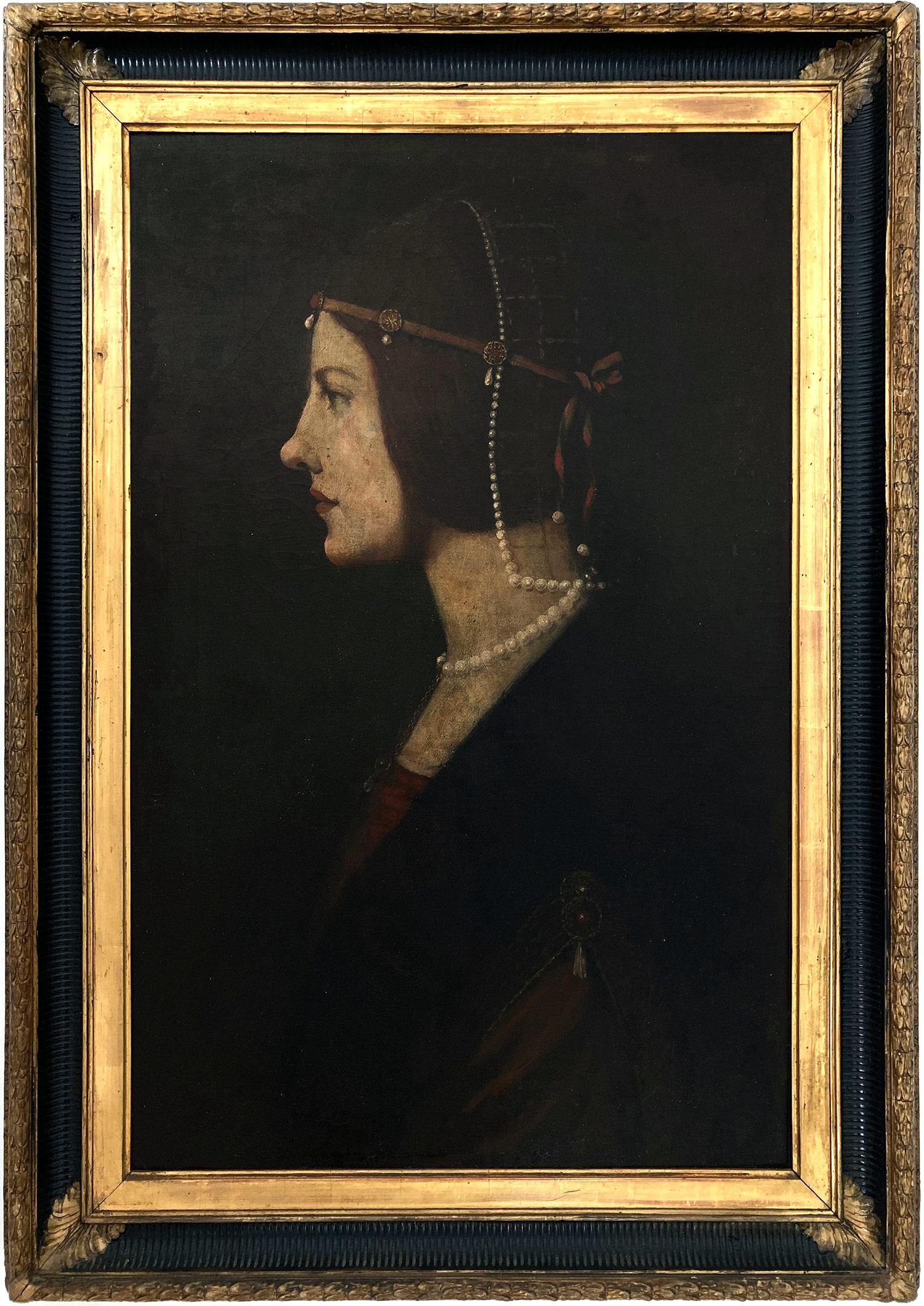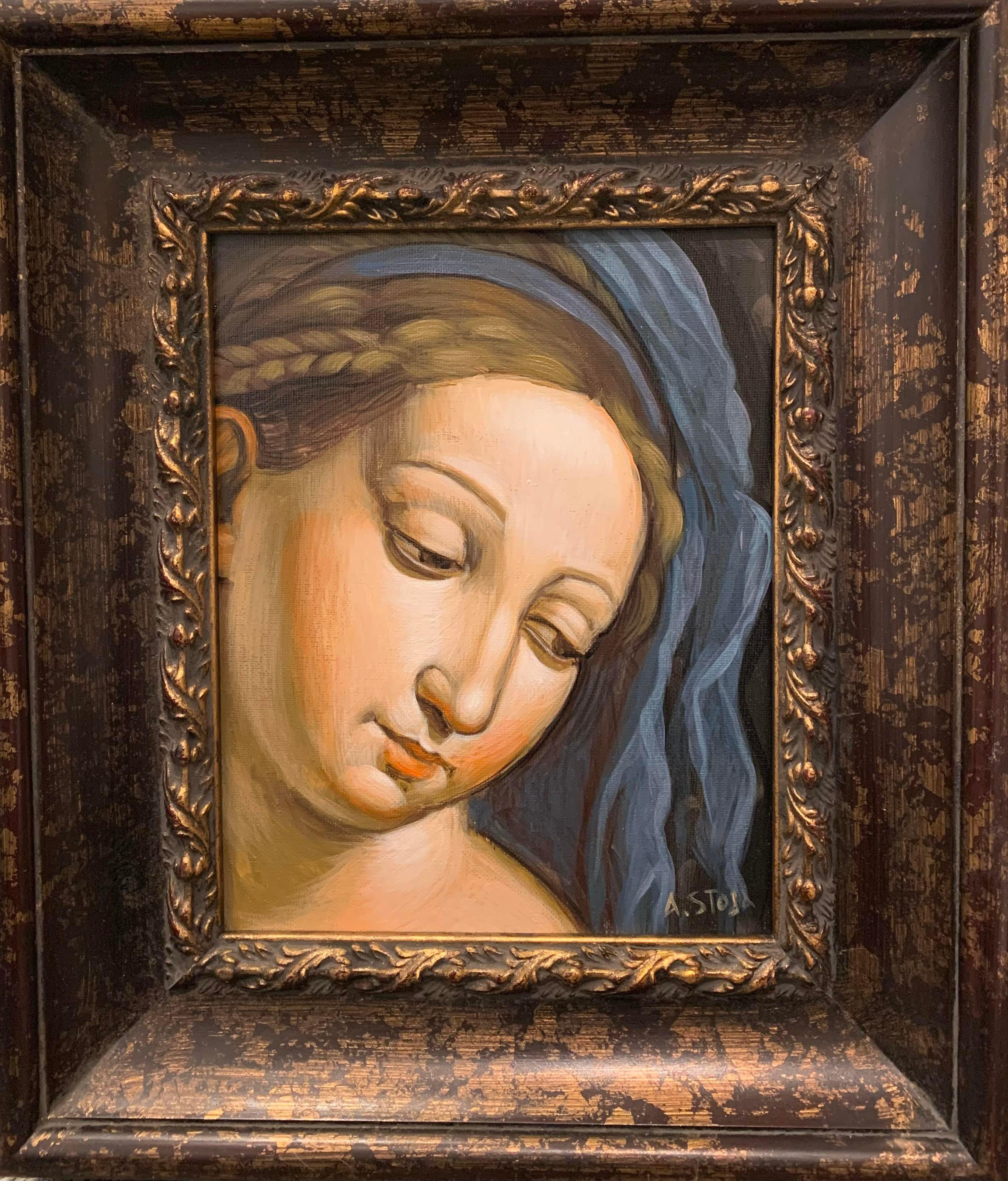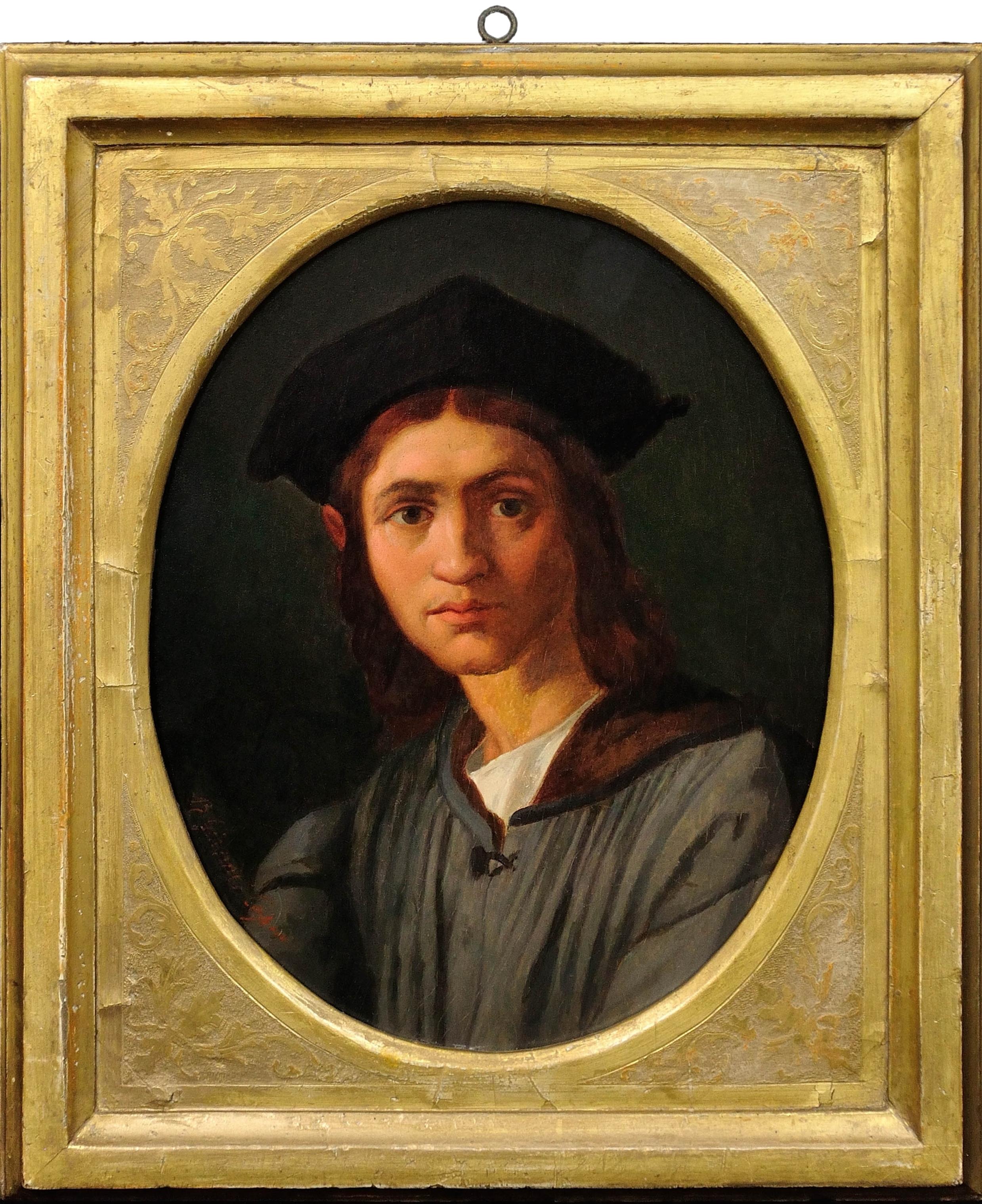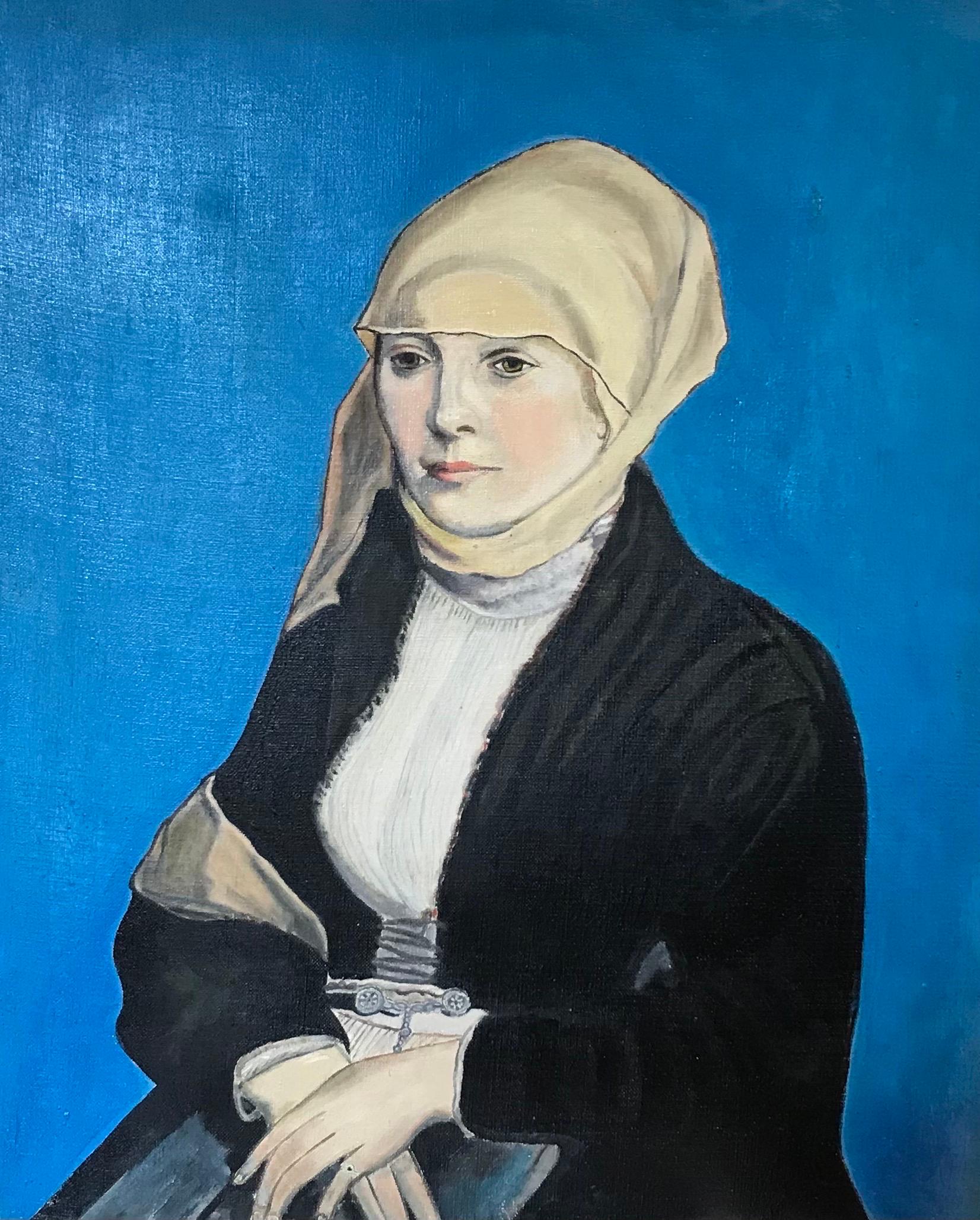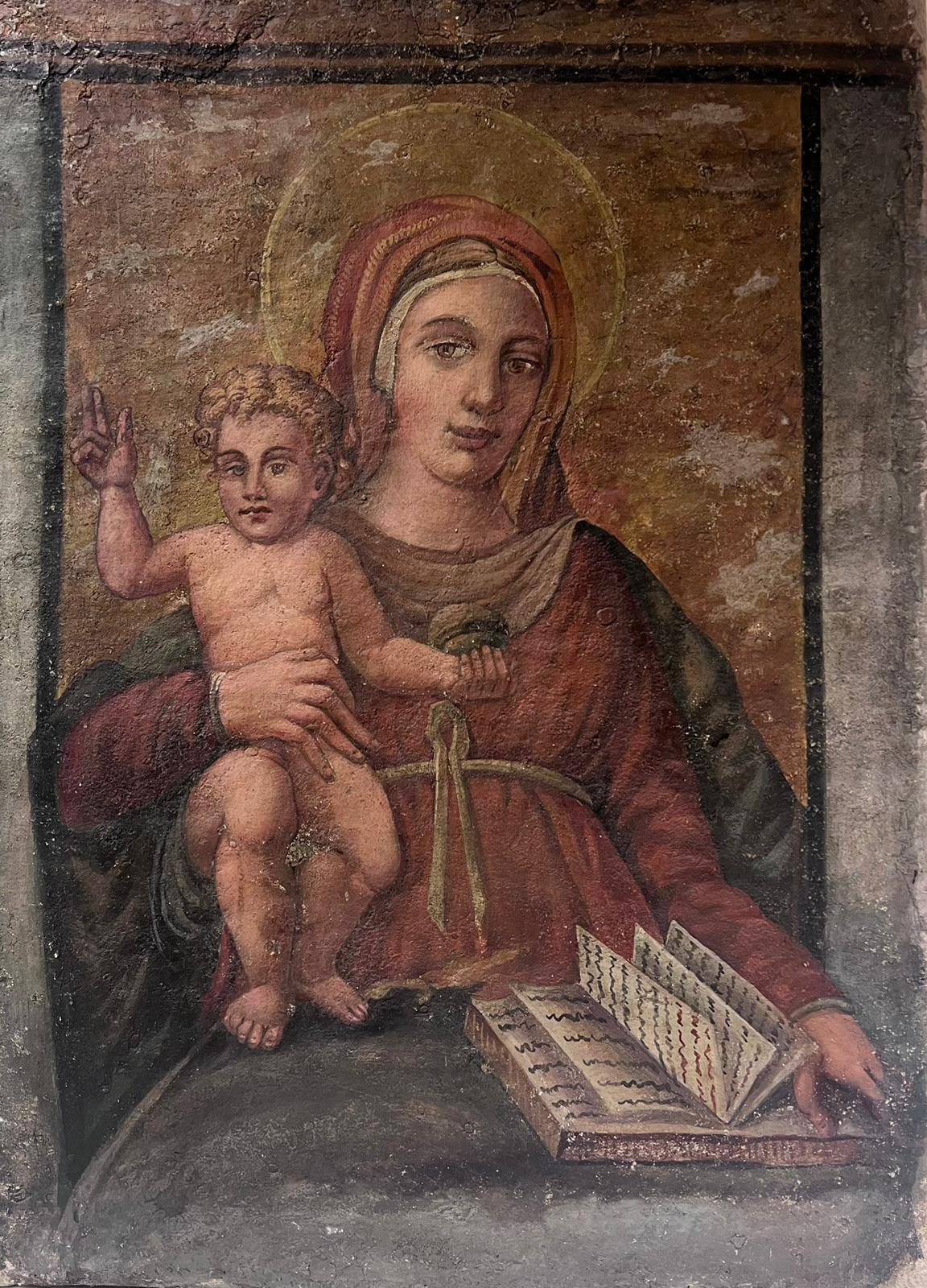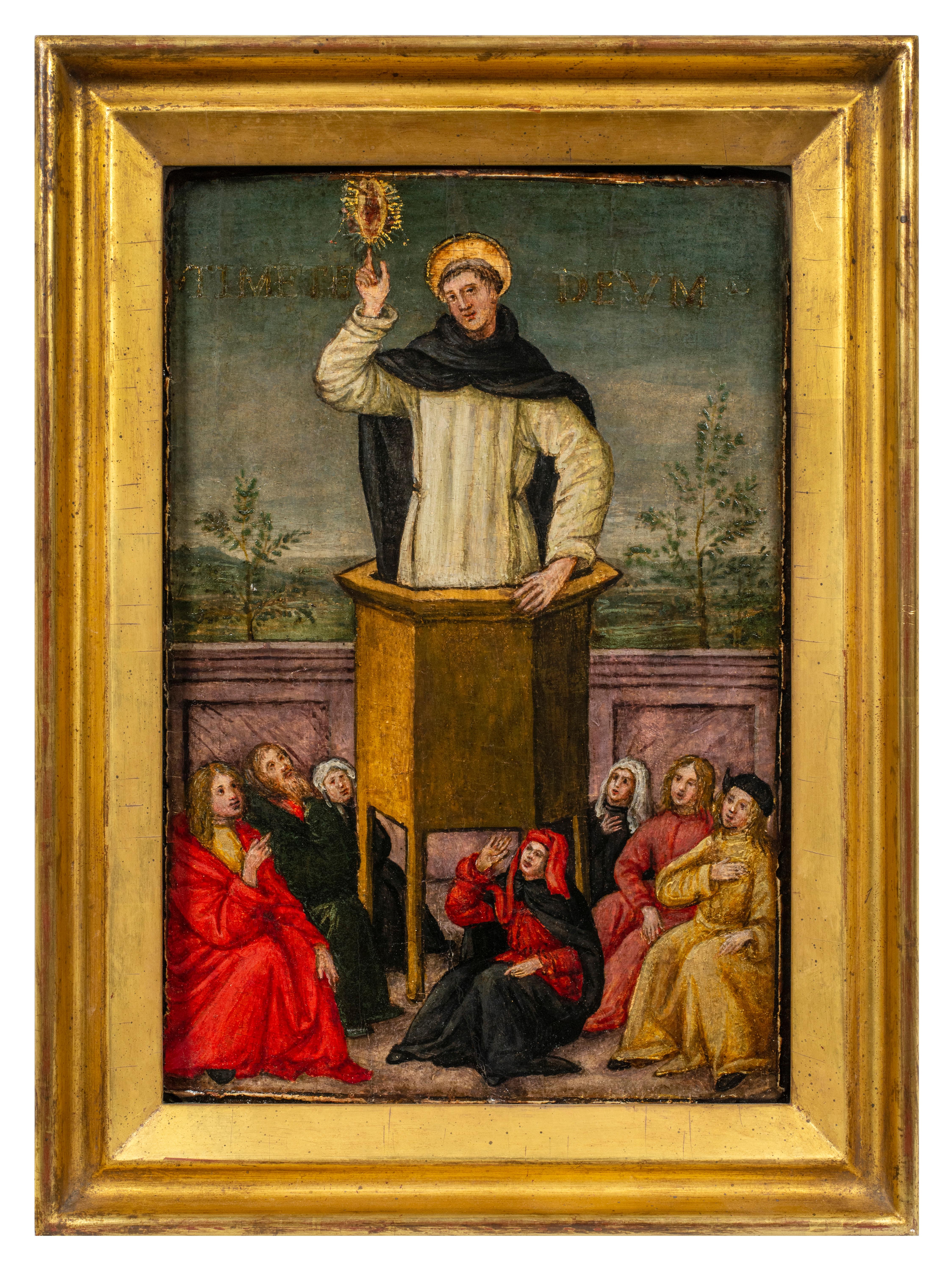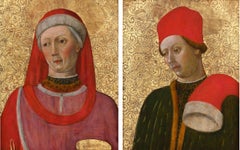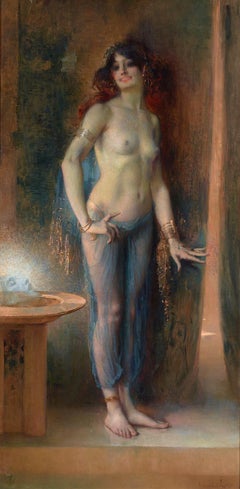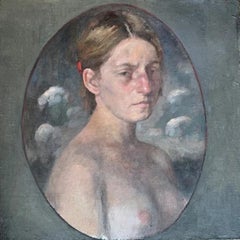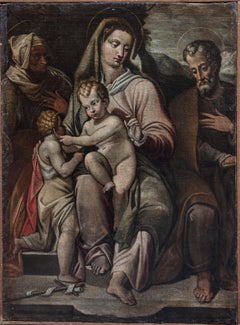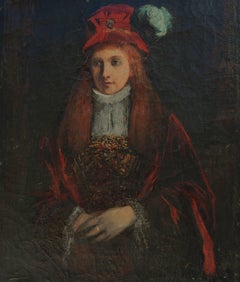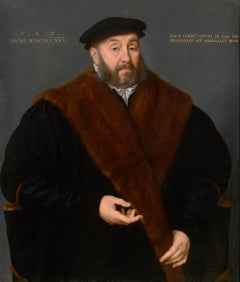
Portrait of Valentin Kötzler
View Similar Items
Want more images or videos?
Request additional images or videos from the seller
1 of 9
Nicolas NeufchatelPortrait of Valentin KötzlerDated 1564
Dated 1564
About the Item
- Creator:Nicolas Neufchatel (1527-1590, Flemish)
- Creation Year:Dated 1564
- Dimensions:Height: 46.75 in (118.75 cm)Width: 41 in (104.14 cm)
- Medium:
- Movement & Style:
- Period:
- Condition:
- Gallery Location:New Orleans, LA
- Reference Number:Seller: 31-16301stDibs: LU1866629282
About the Seller
5.0
Vetted Seller
These experienced sellers undergo a comprehensive evaluation by our team of in-house experts.
Established in 1912
1stDibs seller since 2013
14 sales on 1stDibs
Typical response time: 4 hours
More From This SellerView All
- Saint Cosmas And Saint Damian Attributed To Bonifacio BemboBy Bonifacio BemboLocated in New Orleans, LAAttributed to Bonifacio Bembo c.1444-1477 Italy Saint Cosmas and Saint Damian Tempera on panel These exceptionally rare early Renaissance panels of Saint Cosmas and Saint Damian are an extraordinary new discovery. Based on the research of art historians Marco Tanzi and Andrea de Marchi, it is believed that these represent the missing panels from the famed polyptych formerly displayed on the altar of the Chapel of San Nicola da Tolentino in the Church of Sant’Agostino in Cremona, Italy. To find two matching early Renaissance panels outside of a museum or church, particularly in such remarkable condition, is an extraordinary rarity. The central and left-sided panels of the original five-part polyptych are currently in the collection of the Museo Civico Ala Ponzone in Cremona. These panels have luckily remained intact, and respectively portray the Madonna and Child Enthroned with Angels and Donor, Saint Nicholas of Tolentino (the chapel’s namesake) and Saint George. While the present panels have since been reduced, that they belong to the Cremonese altarpiece is confirmed by a number of stylistic elements. All five panels contain the same rich decorative arabesque pattern on their stamped gold background, while the figures’ knurled haloes are identical in both their fineness of line and use of perspective. The proportions of the figures coincide perfectly; Saints Cosmas and Damian would have originally also been depicted as full-length figures, fitting into the vertical, Gothic style of the altarpiece. According to the Christian religion, Saint Cosmas and Saint Damian were 3rd century physicians born in Arabia. Little is known about their lives except that they were reputedly twin brothers and that they were martyred in Syria during the persecution of Emperor Diocletian. It was believed that the saints were skilled in healing, and when their medicines failed, their faith and prayers could always perform miracles. Thus, the saints are often depicted with their medical equipment while wearing the traditional medieval doctor’s garb of crimson robes and distinctive round red hats. The saints are similarly depicted in the present panels, though considering the manner in which they have been cut, their medical tools are not immediately evident. The saints were highly popular as patrons of wealthy families during the Gothic and Renaissance eras, particularly the Medici, and thus they occur frequently in art from the era. The twins, for instance, are found in the famed San Marco Altarpiece by Fra Angelico in the San Marco Museum (Florence), as well as in a set of Medici panels crafted by Filippo Lippi...Category
15th Century and Earlier Renaissance Portrait Paintings
MaterialsTempera, Panel
- SalomeLocated in New Orleans, LAThis compelling portrait of Salome was composed by the French painter Marie Felix Hippolyte-Lucas. While the celebrated artist's oeuvre is filled with bright and cheerful portraits of aristocratic women surrounded by florals, here he takes a different approach. Hippolyte-Lucas' Salome is simultaneously exotic and highly modern, rendered in a style that is both theatrical and bold. The monumental work's rich color palette is filled with gem-inspired hues that lend drama to the scene, highlighting the blatant sexuality of this legendary seductress. Though Salome is not named in the New Testament, she has appeared time and time again in art and literature over the centuries, as both an innocent and a seductress. Her mother, Herodias, resented John the Baptist, who denounced her marriage to King Herod as unlawful. At one evening meal, Salome danced...Category
19th Century Other Art Style Nude Paintings
MaterialsCanvas, Oil
Price Upon Request - The Sleuth By Joseph Christian LeyendeckerBy Joseph Christian LeyendeckerLocated in New Orleans, LAJoseph Christian Leyendecker 1874-1951 | American The Sleuth Saturday Evening Post Cover, June 2, 1906 Signed "JCLeyendecker" (lower left) Oil on canvas A debonair sleuth peers t...Category
Early 20th Century Other Art Style Figurative Paintings
MaterialsCanvas, Oil
- Buste d'homme barbu by Pablo PicassoBy Pablo PicassoLocated in New Orleans, LAPablo Picasso 1881-1973 Spanish Buste d'homme barbu (Bust of a Bearded Man) Signed "Picasso" (upper right) and dated "8.4.65" (en verso) Oil on canvas Pablo Picasso and his work transcend art history: they have achieved global celebrity within both academic circles and popular culture. More than any other artist, his ever-evolving, evocative style has come to define modern art of the 20th century, and to this day he continues to gain recognition. The most compelling of his works offer a glimpse into the psyche of the master himself, and the present work can be counted among these. Combining saturated color with a jarring simplicity, Buste d'homme barbu represents an important series of bearded men portraits that the artist composed during the last few years of his life. These works are among the most highly personal and intimate of his career, and they serve as remarkable examples of his mature style with their highly modern expressivity. Many of Picasso's works from his last years capture the visage of his wife Jacqueline, who was his chief model during this period. In April, however, at his home studio in Mougins, France, Picasso changed direction and produced a series of individual portraits of men. His male subjects derive from various sources. Often they were self-referential portraits; often they referenced his father, Spanish painter José Ruiz...Category
20th Century Post-Impressionist Portrait Paintings
MaterialsCanvas, Oil
Price Upon Request - Pair of Royal Portraits of the Duke and Duchess of BurgundyBy Pierre GobertLocated in New Orleans, LAFollower of Pierre Gobert 18th century French The Duke and Duchess of Burgundy Oil on canvas Refinement and intricacy characterize these royal portra...Category
18th Century Portrait Paintings
MaterialsCanvas, Oil
- SantaBy Leslie ThrasherLocated in New Orleans, LAA Salvation Army Santa looks on with a mixture of fatigue and disinterest as a group of children tell him their Christmas gift wish lists in this lighthearted composition by leading American illustrator Leslie Thrasher. This painting was created for the December 20, 1930 issue of Liberty Magazine, for which the artist illustrated covers on a weekly basis for six consecutive years. Thrasher is known for his scenes of everyday American life imbued with a sense of humor, qualities represented to great effect in this charming painting. Born in 1889 in Piedmont, West Virginia, Thrasher studied at the Pennsylvania Academy of Fine Arts as a teenager and received a scholarship to study art abroad in Paris. Upon his return, he began studying under Howard Pyle, known as the “father of American illustration.” Thrasher sold his first cover illustration to the Saturday Evening Post in 1912, four years before Norman Rockwell’s first Post cover, and he would go on to produce over 360 magazine covers throughout his career. He painted humorous, relatable scenes of everyday life in America with colorful characters set against white backgrounds. He was also a successful commercial artist, painting advertisements for Cream of Wheat, Chesterfield Cigarettes...Category
Early 20th Century Other Art Style Figurative Paintings
MaterialsCanvas, Oil
You May Also Like
- 'Reut' by Roni Taharlev - Nude Portrait of a Young Woman - Oil PaintingBy Roni TaharlevLocated in Carmel, CAIn "Untitled," a 20" x 20" oil on canvas, Roni Taharlev captures an intimate moment of introspection. The painting's muted palette, with soft earth tones against a subdued backdrop, ...Category
2010s Renaissance Nude Paintings
MaterialsCanvas, Oil
$9,600 Sale Price20% OffFree Shipping - The Holy Family with saints Anne and Joseph. Tuscan school. Circa 1610.Located in Firenze, ITThe Holy family with St. Joseph and St. Anna. Tuscan school. Late mannerist period, Circa 1610. Oil on canvas. Size 102cm x 77cm Painting by an unknown Tuscan painter from the lat...Category
18th Century and Earlier Renaissance Figurative Paintings
MaterialsCanvas, Oil
- 19th Century Young Irish Woman with Feathered HatLocated in Soquel, CAMid 19th Century portrait of a young Irish woman in c. 1570s dress with ruffle. Painted in the style of William Merritt Chase. Unsigned and unframed.Category
Mid-19th Century Renaissance Portrait Paintings
MaterialsOil, Canvas
$1,440 Sale Price20% Off - "Lady". Contemporary Figurative Oil PaintingBy Sax BerlinLocated in Brecon, PowysThis piece from Berlin's studio dates back to 2003 but has only now been released. She's an a la mode young woman from the halcyon days of the Belle Epoque; confident and bewitching ...Category
Early 2000s Renaissance Portrait Paintings
MaterialsMarble
- ‘Two Women & Bird’ Figurative Female Models Oil On Canvas By Roni TaharlevBy Roni TaharlevLocated in Carmel, CA"Two Women & Bird," an evocative oil on board composition by contemporary artist Roni Taharlev, is a study in the nuanced interplay of form, shadow, and emotion. Sized at 40"x28", th...Category
21st Century and Contemporary Renaissance Portrait Paintings
MaterialsOil, Canvas
$20,000 Sale Price20% OffFree Shipping - Copy of "Portrait of Beatrice dʼEste" by Leonardo da Vinci created 15th CenturyLocated in New York, NYA masterful copy by an unknown artist, after the portrait of "Beatrice d'Este" by Leonardo Da Vinci also known as ‘Portrait of a Lady’ or ‘La Dama con la reticella di perle (The Lady With a Pearl Hairnet)’. The original work originally created in the 15th Century is currently on display in the Pinacoteca Ambrosiana Museum of Milan. Beatrice d'Este was the Duchess of Bari/Milan and was believed to be one of the most attractive princesses of the Renaissance. Her impeccable style won her many admirers throughout Italy and France, and she became a trendsetter of the highest order. This copy of the original painting, is an oil on canvas done in the 18th Century, and in this exquisite portrait, the artist has masterfully depicted the fine details with draped hair, pearls, royal dress, ornate headgear and sumptuous jewelry in front of a dark background. Once again, capturing the imagination with another enigmatic smile. It comes housed in an elegant period giltwood frame with ebonized trims and ready to be displayed with hanging wire on verso. Art measures 28 x 18 inches Frame measures 34.5 x 24.5 inches There is much debate and controversy over who actually painted the "Beatrice d'Este" was it Leonardo da Vinci (1452–1519), or Giovanni Ambrogio de Predis (1455–1508). So we may never know who executed the original portrait which hangs in the museum, but that need not deter from an appreciation of its singularity. Following the portraiture convention established by painters of the Quattrocentro, the artist has chosen to portray his sitter in profile. In doing so, he magnificently captures the essence of his sitter, a girl on the threshold of womanhood. Bedecked in the adornments—silk, velvet, pearls and embroidery (brocade) crafted of spun gold threads—afforded her by birthright and marriage, Beatrice looks forward in noble serenity. And at the same time her profile with its upturned nose and slight smile betrays an innocence that must have been the basis of the oft-repeated epithet: la più zentil donna in Italia” (“the sweetest lady in Italy”). It is believed the lady is Beatrice d'Este (1475-1497), duchess of Bari and later of Milan, the wife of Ludovico Sforza (known as "il Moro"). One of the most beautiful princesses of the Italian Renaissance, she was known for her good taste in fashion. Beatrice was a member of the Este-Sforza family, which joined by marriage two of the oldest reigning and already powerful houses in Italy. The house of Este, which held court in Ferrara, traced its lineage to the 11th century Dukes of Saxony and Bavaria. Beatriceʼs father, Ercole I ruled the Ferrara commune for 34 years, catapulting the city-state (and the Estes with it) to an unmatched level of economic prosperity and cultural prominence. The family was renowned for its love of letters and patronage of the arts. The first time Leonardo da Vinci’s name resounded in the Ambrosiana, it was through the pen of its founder, Cardinal Federico Borromeo, who attributed this little panel to the great Master, describing it as “A portrait of a Duchess of Milan, by the hand of Leonardo”. Following the Cardinal’s statement, the portrait was for long assumed to depict Beatrice d’Este, the wife of Ludovico il Moro. However, scholars have recently been more cautious and vague in their statements, with regard to both the artist (anonymous Lombard or Emilian...Category
18th Century Northern Renaissance Portrait Paintings
MaterialsOil, Canvas
Recently Viewed
View AllMore Ways To Browse
International Klein Blue Paint
17th Century Portrait Of A Lady
Yves Klein Blue Painting
Antique Oil Portraits 17th Century
Mary I Queen
Queen Mary I
English Gentleman Oil Portrait
Oil Portrait Painting Red Mid Century
Sailor Portrait
Large 16th Century Oil Paintings
17th Century English Portraits Oil
Portrait Of Bishop
Rabbi Painting Portrait
Portrait Rococo Frame
Portrait 1930 Lady
Anthony Charles
Oil Portrait King Queen
Philip Stone

